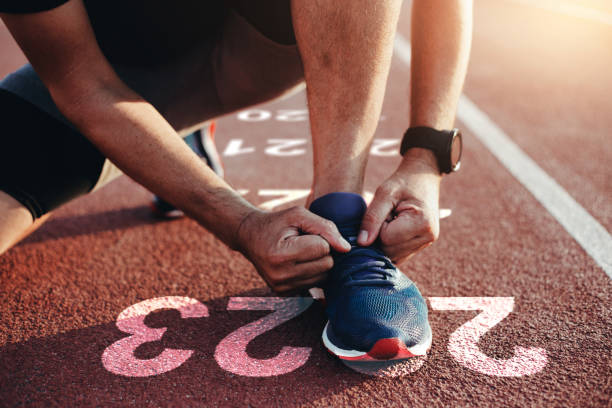Running can do more than just help you achieve the body you want. It offers a lot of benefits to your mental and physical health as well. If you want to get started with running, start with this guide.
Proper Running Form
When you’re new to running, focus on your running form so you can prevent injuries and improve your performance. While every runner has their own unique style, there are some general guidelines to follow. Hollis Tuttle, an RRCA-certified run coach, recommends the following tips:
- Keep your shoulders relaxed and your arms slightly away from your body. Bend your elbows about 90 degrees. The hands must be relaxed. Swing your arms at waist level.
- Always land lightly between your heel and midfoot to avoid injury. Roll forward through your toes, focusing on minimizing contact time with the running surface.
- When running, keep your chin up and maintain a forward gaze. Your shoulders should be aligned with your hips.
To get a better sense of your form, you can record yourself running or watch videos of professional runners. Working with a certified running coach can also provide you with personalized tips and guidance.
How to Stay Motivated to Run
Even the most experienced runners face days when motivation is elusive. To stay on track, consider these tips:
- Schedule your runs in advance, whether it’s for a week or a month. Add them to your calendar to ensure they fit into your schedule, especially if you’re following a specific training plan.
- Have an accountability partner to make running more enjoyable and helps you stay committed. Knowing that someone is counting on you to show up can be a powerful motivator.
- Sign Up for a Race. Running with a specific goal in mind can provide a strong sense of motivation. Consider the distance, time of year, and terrain of the race before signing up. Longer races require more training time and may have additional challenges like hills.
Choosing the Right Training Plan
Using a training plan tailored to your needs is crucial, especially as a beginner. According to Tuttle, a well-designed training plan helps prevent injuries and prepares you to perform your best. Consider the following factors when choosing a plan:
- Select a plan specific to your race distance, whether it’s a 5K, 10K, half marathon, or marathon.
- Take into account your current fitness level and any previous running experience.
- If you have a specific time goal in mind, choose a plan that aligns with it.
Training plans typically include a mix of speed workouts, easy runs, long runs, and tempo runs. Incorporating cross-training activities, such as swimming or weightlifting, can also complement your running and reduce the risk of overuse injuries.
Essential Running Gear for Beginners
One of the great things about running is that it requires minimal gear to get started. However, a few essentials can enhance your comfort and safety. Hollis recommends the following:
- Shoes. Invest in a good pair of running shoes that provide proper support and cushioning. Visit a local running store to find the right fit or consider the type of running you’ll be doing (trail, street, track, etc.).
- Socks. Choose socks that fit properly, preferably made of moisture-wicking material to keep your feet dry and prevent blisters.
- Apparel. Choose moisture-wicking, breathable clothing to keep you comfortable during your runs. Consider weather conditions and dress accordingly, layering up in colder temperatures.
- Sports Bra (for women). Invest in a supportive sports bra that fits well and provides the necessary comfort and protection during your runs.
- GPS Watch or Running App. Consider using a GPS watch or a smartphone running app to track your distance, pace, and progress. It can also help you set and achieve specific running goals.
- Reflective Gear and Lights. If you plan to run in low-light conditions, make sure to wear reflective clothing or accessories and use lights to enhance your visibility to motorists.
- Hydration Gear. Depending on the duration of your runs, you may need a handheld water bottle, a hydration belt, or a hydration vest to stay properly hydrated.
Consider as well where you plan to do your training. Running outdoors is different from running on a treadmill. Modern treadmills like the ones you can find in 24 Hour Fitness have features that may imitate outdoor running conditions so this is also a good option if you prefer working out in a gym.
Here are some tips to help you learn running form:
